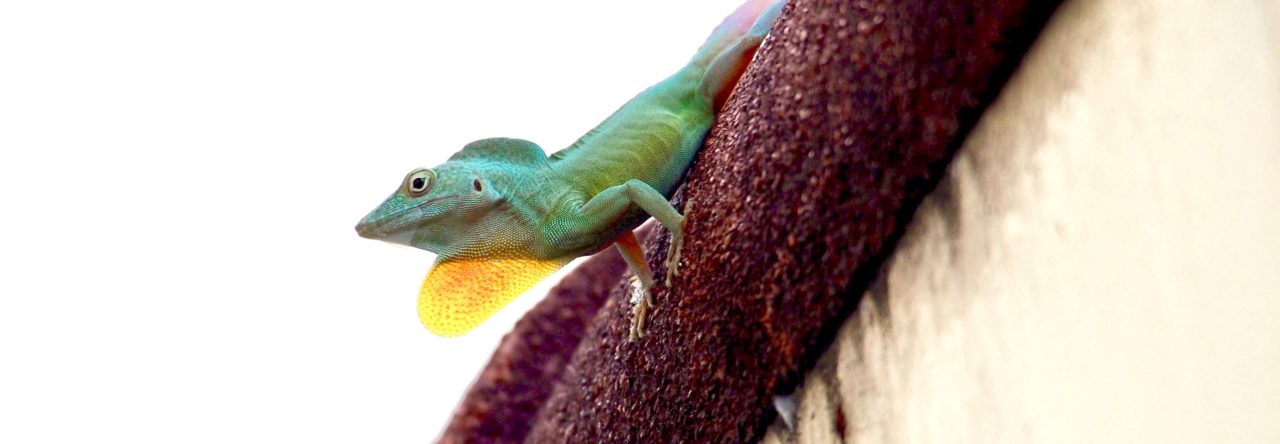My first two posts [1,2] reported on how we got to the Swan Islands and what we found on Great Swan, especially the anoles. But after five days on the island, we had given up hope of crossing the strait to Little Swan Island. The navy on the island had no boat. The channel between the islands, while narrow, was deep and carried a substantial current. From the air, it appeared that there were no sandy beaches on which to land, only jagged rocks beyond the jagged reef.
That afternoon, we were surprised to hear the sound of a motor. From the top of the dilapidated radio tower, someone spotted a small boat headed for the island. It turned out to be a lobster boat, headed back to the mainland of Honduras after several weeks collecting lobsters offshore. They were stopping at Swan Island to replenish their supply of plantains and rainwater. With a little haggling, we were able to persuade the captain to ferry us over to Little Swan the next day and pick us up again several hours later!
We arranged to leave the next morning at 6 a.m. The morning came and we packed our gear and went to wait at the dock. Two men headed from the boat to the shore in rickety-looking fiberglass canoes and we piled in: three in one canoe and two in the other. Randy and I were sitting in the canoe with three and I was a little nervous. The lip of the canoe seemed awfully close to the water line and the surf was high enough to bounce us around. But the sailor paddling us back seemed unconcerned, so away we went.
We made it about halfway to the boat before a wave came up to the lip of the canoe and poured in. Within moments the canoe had disappeared beneath us and we were bobbing in the water a couple hundred feet from shore. My first thought was that my camera was going to get wet – the second thought was that it is hard to tread water in hiking boots. I tried to hold my backpack over the water while we waited for the second canoe to come over. I was able to toss my bag into the canoe, then we held on to the side of the canoe and were towed back to the shore. The other canoe and Randy’s rake stayed on the bottom of the ocean.
Our next attempt to reach the boat was successful. This time, we used three canoes. The captain of the boat was also able to find three life jackets to send along, just in case.



















